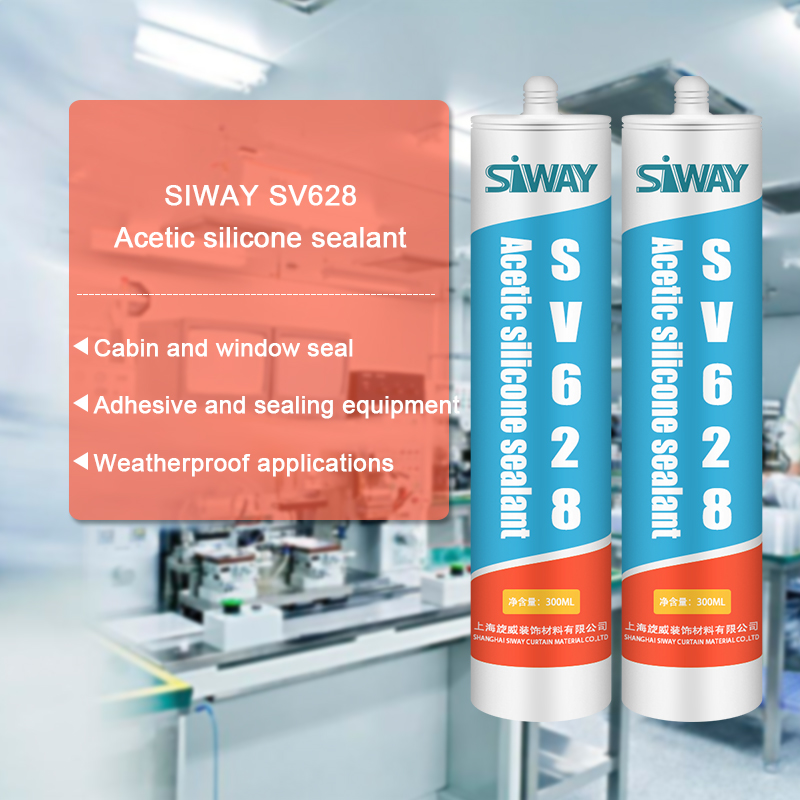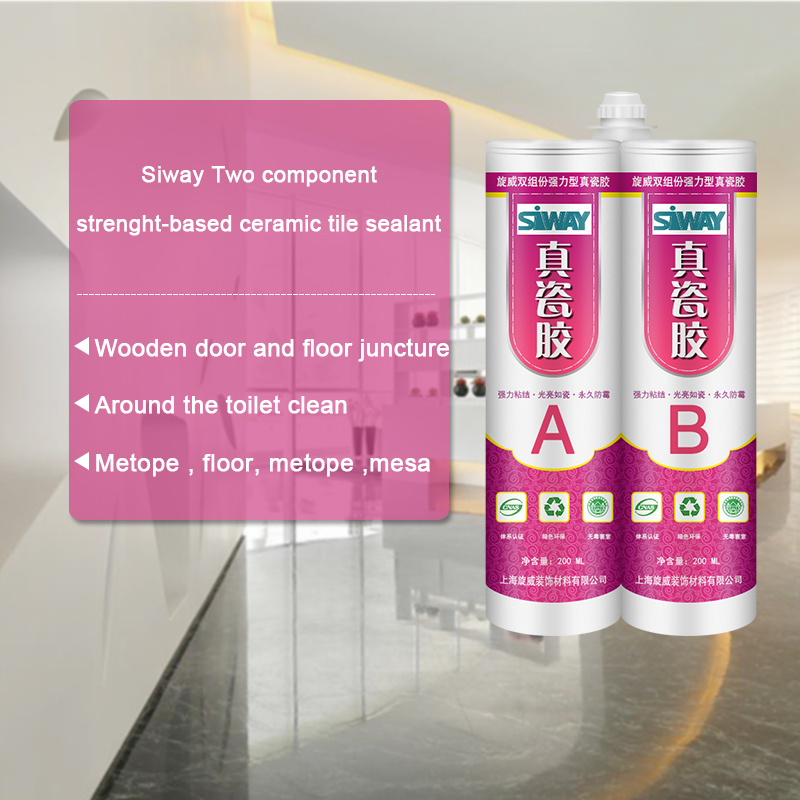Wholesale Price China SV-628 Acetic Silicone Sealant to Turkey Factory
Short Description:
Description It is one- component, moisture curing acetic silicone sealant. It cures fast to form a permanently flexible, waterproof and weather resistant silicone rubber. Where to use Widely used in construction, glass assembling and home decoration.SV-628 has good adhesion to most common building materials e.g. glass, ceramic, tile, wood and fiber glass. Key Features 1. 100% silicone 2. Easy to apply 3. Excellent elasticity 4. Excellent adhesion to most common building materials ...
Our commission is to serve our users and clients with best quality and competitive portable digital products for Wholesale Price China SV-628 Acetic Silicone Sealant to Turkey Factory, Standing still today and looking into the future, we sincerely welcome customers all over the world to cooperate with us.
Description
It is one- component, moisture curing acetic silicone sealant. It cures fast to form a permanently flexible, waterproof and weather resistant silicone rubber.
Where to use
Widely used in construction, glass assembling and home decoration.SV-628 has good adhesion to most common building materials e.g. glass, ceramic, tile, wood and fiber glass.
Key Features
1. 100% silicone
2. Easy to apply
3. Excellent elasticity
4. Excellent adhesion to most common building materials
5. Outstanding weatherproofing capability
6. Fast Curing
Basic Application
1.All kinds of glass curtain wall weatherproof seal
2.For metal (aluminum) curtain wall, enamel curtain wall weatherproof seal
3.Joint sealing of concrete and metal
4.Roof joint seal
Technical data sheet
Technical data sheet for reference,
| Test standard | 1000 | |
| Appearance | ISO 11600 | Have no grain, no agglomerations |
| Extrudability,g/ml | ISO 8394 | 450 |
| Tack Free Time,min | ASTM C 679 | 20 |
| Density,g/cm3 | ISO 1183 | 1.0 |
| Slump,mm | ISO 7390 | 0 |
| Heat weight loss,% | ISO 10563 | 7 |
| Ultimate Tensile Strength,MPa | ISO 8339 | 0.4 |
| Ultimate Elongation,% | ISO 8339 | 150 |
| Ultimate Shear Strength, MPa | ISO 4587 | N/A |
Certification
JC/T881-2001 20LM; GB/T14683-2003 20LM.
Color
clear, black, silvery gray, white, brown
Package
300ml in cartridge * 24 per box, 590ml in sausage *20 per box
Shelf life
12 months
Note
If you want the TDS or MSDS or other details, please contact with our sales person.
If you dont have access to press, or dont have the right tools or time to install a 100% poly urethane, or there isnt one made for your vehicle, or if you dont want the full vibration effect of one, the guys at Poor Man Mods show you how to make your own poly urethane motor mount!
Please watch: “Garage Life Hack!”
https://www.facebook.com/PMMods
https://instagram.com/poormanmods
https://www.pmmods.com
Original post on our site with additional information, plans, questions & comments:
https://www.thewoodwhisperer.com/videos/shellac-under-polyurethane/
I have heard countless times that you should never put polyurethane over waxed shellac. From books to magazine articles to forums to DVD’s, the message is always the same. Even the back of the shellac can itself says not to use polyurethane. Now I have always taken the “better safe than sorry” route, simply avoiding regular waxed shellac. But there have been so many occasions where I have heard of people accidentally using waxed shellac under polyurethane with no detrimental effects. And frankly, I have never heard a first hand account of a terrible finishing disaster using this combination of supposedly incompatible finishes. So what’s the deal?
To answer that question, I decided to do a little experiment for myself. I wanted to see if I could find any evidence of a weakened bond between polyurethane and waxed shellac, when the shellac is used in the typical manner as a sealer. My test is simple and completely non-scientific. There are just too many variables at play to answer this question with any real degree of certainty. But my results gave me enough confidence to say that if you are using the finish as a sealer coat (2lb cut or less), I see no reason not to use whatever shellac you have on hand, even if it has wax in it.
This is a topic that I will continue to watch. And hopefully we’ll hear from some folks who have had experiences, good and bad, with this finish combination.
**EDIT** It was immediately suggested that I do a Scotch Tape lift test. I still had the samples in the shop so I jumped in and did a few more tests. Using both duct tape and Scotch tape over a grid work of slices made with an X-acto knife, no lifting of the finish was observed on any of the boards. I even put tape over the area where the epoxy drops were and no lifting was observed there either. These finishes are holding on for dear life!
The Wood Whisperer is education and entertainment for the modern woodworker! Find more free woodworking videos & articles at https://thewoodwhisperer.com & don’t forget to subscribe to our YouTube channel! https://www.youtube.com/subscription_center?add_user=thewoodwhisperer
Connect with us!
Follow us on Twitter https://twitter.com/woodwhisperer
Like us on Facebook https://facebook.com/thewoodwhisperer
Pin us on Pinterest https://www.pinterest.com/woodwhisperer/
Learn more about our premium project videos at https://thewoodwhispererguild.com




